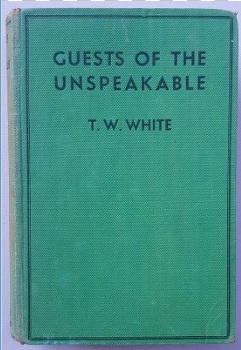Description
Title: High Adventure
Author: Cobby, Arthur Henry DSO, DFC
Condition: Very Good
Edition: 2nd Edition
Publication Date: 1943
ISBN: N/A
Cover: Hard Cover with no Dust Jacket – 203 pages
Comments: The Australian Flying Corps history and the biography of Harry Cobby.
Harry Cobby was born in Prahran, Melbourne, on 26 August 1894. At the age of 18 Cobby received a commission in the 48th Infantry (Brighton Rifles) and when the First World War began he was quick to offer himself to the AIF. However, his employer, the Commonwealth Bank, refused to release him. Cobby finally enlisted in the Australian Flying Corps (AFC) in 1916 despite a self-confessed lack of interest in flying.
In October 1916 Cobby was sent to Point Cook for flying instruction. There he became an original member of No. 4 Squadron, AFC. With no more than 30 minutes of flying instruction behind him, Cobby arrived in England with the squadron in March 1917. By December, having now learnt to fly Sopwith Camels, the squadron was in France. Although their training had ended, Cobby – who had only flown solo for 12 hours – noted the squadron was made up of novices.
In February 1918 he made the first of his 29 kills, the highest score by a member of the AFC. By May, Cobby was an experienced combat airman, having flown against enemy aircraft and participated in low-level attacks against German troops during their March offensive. The latter, which subjected an aircraft to sustained ground fire, was a particularly dangerous undertaking. On 21 May Cobby shot down the first of 13 German observation balloons; like ground strafing, this brought a pilot dangerously close to ground fire. On 25 May 1918 Cobby was promoted to captain, having by now regularly led his flight on operations.
In June 1918 he was awarded the Distinguished Flying Cross; less than a month later he received a bar to that decoration. On 16 August he led an attack on a German airfield at Harboudin, the largest bombing raid carried out by the Allies in France to that date. He led a similar raid the next day and was awarded the Distinguished Service Order. In September Cobby returned to England as an instructor; he was still trying to rejoin a combat unit when the war ended.
Cobby led the AFC fly-past over London on ANZAC Day 1919. In 1921 he became a foundation member of the newly formed RAAF, resigning in 1936 with the rank of wing commander. When the Second World War began, Cobby returned to the RAAF. He served in a number of capacities and, as an air commodore, won the George Medal in 1943 for rescuing survivors of an air crash in which he had been involved as a passenger.
In April 1945 as Air Officer Commanding, 1st Tactical Air Force on Morotai, Cobby was presented with the resignations of several high ranking personal who were annoyed at flying dangerous operations against what they considered “senseless unimportant ground targets”. Known as the “Morotai Mutiny”, the episode resulted in Cobby’s sacking. He left the RAAF in 1946 and joined the Department of Civil Aviation, where he held senior appointments until his death on 11 November 1955.





